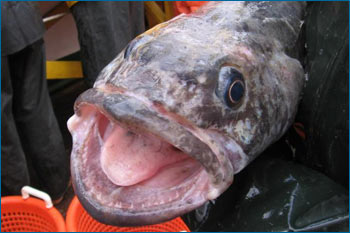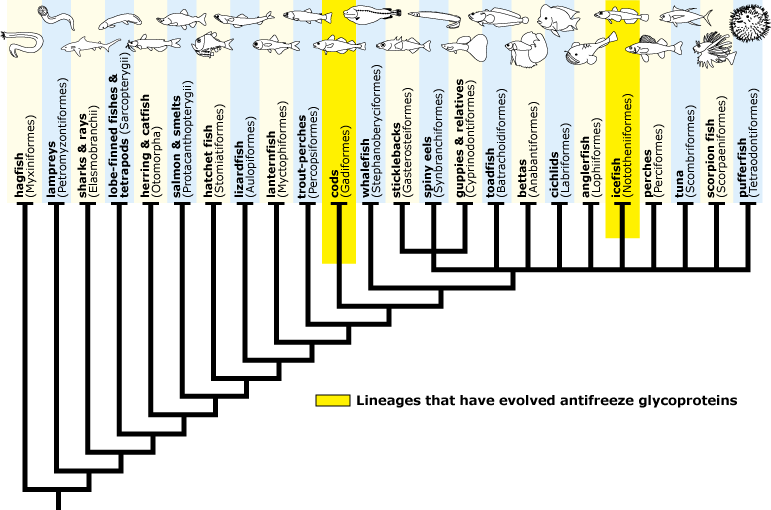
Earth’s oceans get colder than one might think possible. Because of their high salt content, the waters of the Arctic and Antarctic Oceans can drop to -2 degrees Celsius — below the usual freezing point of water (0°C)! Fish like the Antarctic toothfish, a member of the clade Nototheniiformes (NOH-duh-thuh-NEE-ih-FOR-meez), live at these temperatures on a daily basis — so why doesn’t their blood turn to ice? Such fish survive with the help of an evolutionary innovation that would impress any auto mechanic: antifreeze.
The antifreeze with which we’re most familiar keeps the fluids in a car’s motor from freezing during the winter. The antifreeze of the Antarctic toothfish does the same sort of job but works a bit differently. Automotive antifreeze is made from alcohol, but this biological antifreeze (called an antifreeze glycoprotein) is made of proteins and sugars. This substance circulates in the blood of the fish and suppresses the growth of ice crystals, keeping the blood liquid.
How does an adaptation as unusual as antifreeze evolve? In the case of the Antarctic toothfish, it seems that, long ago, parts of a gene that normally code for a pancreatic digestive protein were copied. These duplicated bits of the genome, now no longer used in digestion, experienced natural selection that shaped them to aid survival in lower temperatures. Eventually, this ancient gene evolved into the modern day gene that codes for the fish’s antifreeze glycoproteins.

Surprisingly, the Antarctic toothfish is not the only fish in the sea that produces these handy chemicals. At the Earth’s opposite pole lives the Arctic cod, which has antifreeze glycoproteins nearly identical to those of the Antarctic toothfish.
There are two possible explanations for this observation. Either the species are closely related and both inherited their antifreeze genes from a common ancestor, or the antifreeze glycoproteins evolved independently in the two lineages. The answer is clear when you look at the evolutionary tree of the fish. The two species in question are distantly related and neither has close relatives with the unusual proteins; hence, this seems to be an example of convergent evolution, a form of evolution in which similar traits evolve in two separate lineages because both are faced with similar environmental challenges and experience a similar process of natural selection.
This explanation is also supported by genetic evidence. Different genes are responsible for producing antifreeze in the two species. The Arctic cod’s antifreeze gene has nothing to do with the genes that code for its pancreatic digestive juices. Its antifreeze gene must have evolved in some other way, along a separate path from that taken by the antifreeze gene of the Antarctic toothfish, but reaching the same endpoint. In these two lineages, at opposite ends of the globe, the process of natural selection has favored the evolution of remarkably similar proteins.
Chen, L., DeVries, A. L., Cheng, C. H. C. (1997). Convergent evolution of antifreeze glycoproteins in notothenioid fish and Arctic cod. Proceedings of the National Academy of Science, USA. 94:3817-3822.

